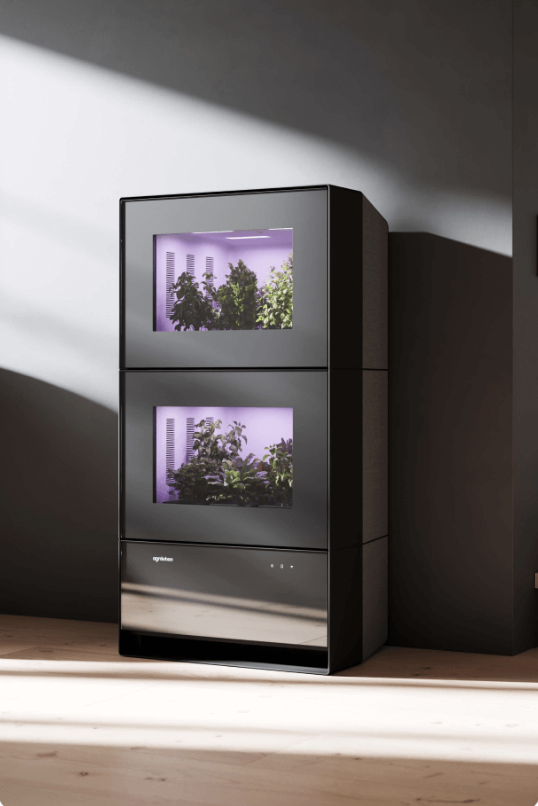The Future of Vertical Farming
July 24, 2022
IMAGINE a future where you could have your own mini farm inside your home. My first introduction to vertical farming is through the industry news of the IFA Berlin Newsroom. Miele, with its Agrilution subsidiary, is directly involved in vertical farming, the next mega-trend in nutrition. If Maximilian Loessl, chief executive of Agrilution, were to have his own way, the future of food supply would be within the four walls of consumers' homes and would be naturally integrated into every kitchen. According to Miele, "Vertical farming is a term used by futurologists to denote multi-level greenhouses providing a local and space-saving supply of fresh produce, for example in urban conurbations."
The vision of the future goes by the name "Plantcube," which is a fully automatic, small-scale vertical farm that is no larger than a standard refrigerator. A user-friendly app controls the features and provides an insight into the growth process and instructions on maintenance and harvesting.
"An increasing number of people live in an urban setting yet strive to live consciously and claim their individual freedoms," said Lössl, "And our Plantcube brings fresher lettuce, herbs and microgreens directly to your table." You would then expect nutritious herbs, salads and microgreens growing inside this small greenhouse, exposed to the perfect light, water and climate conditions. To understand why vertical farming has recently become an important trend, let's look at conventional agriculture. As a coffee farmer, I know the challenges that our farmers face in the Cordillera Administrative Region, including surplus and the smuggling of vegetables. Outside the Philippines, farming is concentrated on a few large commercial operations. One result of this concentration is the distance traveled by produce before it reaches the consumer. This involves emissions in transporting, warehousing and refrigerating food.
Fresh produce loses important nutrients on longer transport routes before we even consume them. Because of intensive forms of agriculture, they diminish the total area available for agricultural purposes each year to 30 m acres (a little over 12 m hectares). This amounts to the area needed to grow about 20 m tons of wheat. The soil loses important nutrients through intensive use.
Aside from Agrilution, there is Freightfarms.com that offers Greenery S, a vertical hydroponic farm built entirely inside a shipping container. Freight farms are provided with high-efficiency light-emitting diodes to provide light wavelengths with strategic light schedules and power levels to stimulate faster plant growth and development. Several market vendors include AS Giri and Aqua LLP, Bowery Farming Inc., Dream Harvest Farming Co. LLC, Eataly Net USA LLC, Elevate Farms, Hortifrut SA, Kalera Inc., Nordic Harvest AS, Plenty Unlimited Inc., Spread Co. Ltd., Triton Foodworks, Upward Enterprises Inc., Urban Green Fate Farms, UrbanKisaan, Vertical Harvest, Vertical Roots, and Village Farms International Inc. among others.
The latest market analysis report titled "Vertical Farming Market by Crop Type and Geography — Forecast and Analysis 2022-2026," predicts the market to witness a potential growth difference of $6.70 billion from 2021 to 2026. Limitations of vertical farming are a factor challenging the vertical farming market growth, since it is suitable for growing only a few varieties of vegetables and fruits. It could grow limited types of fruits and vegetables through vertical farming. Provision of high calorie-rich foods is not possible, as they require high food security. We need traditional farming methods to produce domesticated grain crops such as wheat, barley, corn and rice. Even calorie-rich root crops could grow well only with outdoor farming methods. The report adds that "increasing population and less availability of fertile land would facilitate the vertical farming market growth in Asia-Pacific (APAC) over the forecast period." Based on the report, 43 percent of the market's growth would originate from APAC. Key markets for vertical farming in APAC are in China and India. According to the report, market growth in this region would be faster than the growth of the market in other regions. One of the key vertical farming market trends is the growing demand for smart or advanced vertical farming technologies




